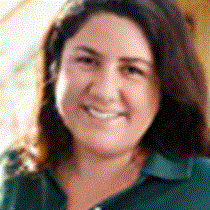Espanola Island
It is our last day in the Galápagos. It is hard to think about something that we haven’t seen yet. We witnessed an active volcano, and we found flamingoes and penguins living together on the same island. We have seen green sea turtles and sharks underwater, and we also found gigantic tortoises on land. What is left to see? Espanola still reserves several surprises for us. First of all, we land on a white sandy beach crowded with sea lions, glowing with the surrounding turquoise water. We snorkel and see diamond sting rays and colorful parrot fish. However, it is the afternoon that sets aside the final highlight of the week, waved albatrosses. These are the largest sea birds of the Galápagos and one of the largest in the world. We find them nesting along the southern cliffs of Punta Suarez, our visitor site in the afternoon. There are a few couples still courting, preparing themselves for next year’s breeding season. There are also several chicks with their brown down feathers, hoping to be ready to fly by the time all albatrosses leave the island, by the end of December. But it isn’t just the albatrosses! We encounter the most colorful subspecies of marine iguana. We find curious Espanola mockingbirds and the cutest sea lions of Galápagos, lots of tiny babies, some just a few hours old.
Let’s see what Sunday has kept back for us. Mmaybe when we arrive to Baltra to take the plane to go home, perhaps then, looking west, we see it again: The volcano!
It is our last day in the Galápagos. It is hard to think about something that we haven’t seen yet. We witnessed an active volcano, and we found flamingoes and penguins living together on the same island. We have seen green sea turtles and sharks underwater, and we also found gigantic tortoises on land. What is left to see? Espanola still reserves several surprises for us. First of all, we land on a white sandy beach crowded with sea lions, glowing with the surrounding turquoise water. We snorkel and see diamond sting rays and colorful parrot fish. However, it is the afternoon that sets aside the final highlight of the week, waved albatrosses. These are the largest sea birds of the Galápagos and one of the largest in the world. We find them nesting along the southern cliffs of Punta Suarez, our visitor site in the afternoon. There are a few couples still courting, preparing themselves for next year’s breeding season. There are also several chicks with their brown down feathers, hoping to be ready to fly by the time all albatrosses leave the island, by the end of December. But it isn’t just the albatrosses! We encounter the most colorful subspecies of marine iguana. We find curious Espanola mockingbirds and the cutest sea lions of Galápagos, lots of tiny babies, some just a few hours old.
Let’s see what Sunday has kept back for us. Mmaybe when we arrive to Baltra to take the plane to go home, perhaps then, looking west, we see it again: The volcano!




